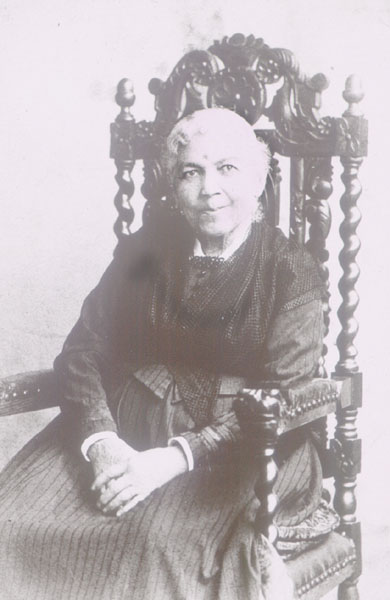Harriet Jacobs, aka, Linda Brent: A Woman's Story of Slavery
from docsouth.unc.edu
"...I do earnestly desire to arouse the women of the North to a realizing sense of the condition of the two millions of women at the South, still in bondage, suffering what I suffered, and most of them far worse. I want to add my testimony to that of abler pens to convince the people of the Free States what Slavery really is. Only by experience can any one realize how deep, and dark, and foul is that pit of abominations. May the blessing of God rest upon this imperfect effort in behalf of my persecuted people" (Jacobs 281).
Harriet Jacobs was born in Edenton, North Carolina in 1813 to Elijah Knox and Delilah Horniblow, both slaves. In accordance with the edict of the time, Harriet and her brother, John "followed the condition of their mother" in slavery. After Delilah died when Harriet was a mere six years old, the little girl went to live with her mother's mistress, Margaret Horniblow. The white mistress taught Harriet to read, and to perform domestic duties such as cooking and sewing. Margaret died in 1825 and in the codicil to her will, bequeathed her slaves to her five-year-old niece, Mary Matilda Norcom, daughter of Dr. James Norcom.
It was Norcom who Jacobs refers to as "Dr. Flint," in her autobiographical narrative Incidents in the Life of a Slave Girl, as the cruel and draconian master who repeatedly molested her for nearly ten years. To escape Norcom's advances, Harriet took a consensual lover, the white attorney and later, congressman, Samuel Sawyer. Sawyer would father her two children, Joseph and Louisa. As the children were considered property of Dr. Norcom, as Harriet remained his slave, Norcom repeatedly threatened to sell Joseph and Louisa if their mother continued to refuse his advances. Harriet Jacobs escaped the homestead of Norcom in 1835, hiding out in swamps and later, in an attic on her grandmother Molly's property where she spent seven years in its cramped, inhospitable quarters.
In 1842 Jacobs escaped to Philadelphia with the help of the antislavery organization the Philadelphia Vigilant Committee; and in 1845, she went from there to New York. In the interim, Sawyer purchased her children and gave them their freedom. He funded their trip north to find work. Harriet worked as a nursemaid in the home of Nathaniel Parker Willis, and her brother aided her by keeping watch in case Norcom should attempt to track her in New York.
By 1850, the Fugitive Slave Law placed Harriet in even greater peril. Her brother, John, fled to California where the law was not in force. Cornelia Grinnell Willis offered to send Harriet to Massachusetts to hide with the Willis baby. In the meantime and without Harriet's knowledge, Willis paid three hundred dollars to Daniel Messmore, the husband of Harriet's legal mistress, thereby making her a free woman.
Incidents in the Life of a Slave Girl changed hands several times before it actually came to print. Initially the narrative was published in serial form by abolitionist newspaper mogul Horace Greeley's New York Tribune, but the details of Harriet's experience with Dr. Norcum proved excessive for the delicate puritanical sensibilities of her audience. Jacobs' next step was to take her manuscript to a publishing house, Phillips and Samson. The firm offered to publish the manuscript provided that Jacobs could secure a foreword from Cornelia Willis or Harriet Beecher Stowe. Jacobs refused to impose on Willis, and Stowe flatly refused her. The manuscript was eventually published by Thayer and Eldridge with a preface by reformer and activist, Lydia Marie Child.
Jacobs' targeted reading audience was middle-class, white, Christian women. She emphasized the horrors exacted upon female virtue, the institution as evidence of the South's avarice; and underscored the manipulation of Christian ethics in the so-called "patriarchal institution." However, what is central to Jacobs' narrative are the trials and obstacles she faced in freeing her children. After her former owner put a price on her head, Jacobs went into hiding. For seven years she inhabited a small, cramped garrett in her grandmother's home, watching over her children through a tiny opening: an experience she relates in painstaking detail in her narrative.
What is distinct about the female slave's narrative is that, along with the numerous dehumanizing and appalling indignities male slaves had to face, female slaves faced the added torment of becoming the victims of miscegenation: a forced sexual liaison with her master. The children that were products of these unions were, more often than not, sold into slavery. Jacob's narrative informs her contemporary audience of the indignities she endured as a woman generally, but more specifically, as a mother.






Comments
Post a Comment